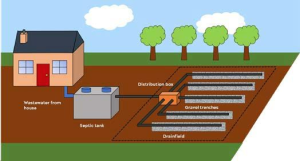Kitchen Remodeling Temecula updates your kitchen with new cabinetry, appliances, flooring, and more. These upgrades can transform your kitchen into a beautiful living space and add value to your home.
Before beginning a kitchen renovation, set your budget and decide what you want from your new kitchen. Then, research layouts, designs, and products online or visit showrooms to get ideas.

The kitchen is the heart of a home, and as such, it should reflect the owner’s taste and lifestyle. Remodeling your kitchen gives you an opportunity to refresh the aesthetics with modern designs and sleek finishes that can elevate the space. Incorporating new countertop materials, cabinets, and lighting fixtures is a surefire way to improve the look of your home. Kitchen remodeling also includes enhancing functionality by optimizing the layout for efficiency. Whether you have a small or large kitchen, an improved layout will make cooking and entertaining much easier.
Many homeowners are looking to update their kitchen with design trends in mind. From backsplash tiles with bold patterns to gold accents on drawer handles, you can incorporate a variety of elements to infuse your personality into the kitchen. However, it is important to keep in mind that not every trend will work well with your kitchen’s overall design aesthetic. To avoid making your kitchen look dated, opt for timeless elements in big-ticket items like cabinetry and countertops, and use trendy colors or patterns sparingly.
A kitchen upgrade provides the ideal opportunity to introduce natural light to the room. If you want to brighten up your kitchen, consider adding more windows or removing a wall that blocks the natural light from a window or doorway. This can create a more open and inviting feel for both you and your guests.
Choosing lighter color palettes can also help make your space feel bigger and more airy. If your current kitchen has a lot of dark tile, woodwork, or appliances, it can make the space feel small and claustrophobic. To counter this, consider replacing the darker surfaces with a lighter material or paint color to instantly make your kitchen feel more spacious.
Kitchen remodels also provide the perfect opportunity to add personality and warmth through custom features. For example, if you are celebrating Diwali, you can decorate your kitchen with golden accents or vibrantly-colored backsplash tiles that celebrate the holiday.
A professional kitchen remodeler can help you navigate the best upgrades that will enhance your space and fit your budget. They will also know how to take precise measurements, so you can be confident that your new cabinets and other features will fit perfectly. Additionally, they can help you save money by refacing your existing cabinets instead of replacing them entirely.
More Functionality
Kitchen remodeling isn’t just about changing out cabinets, countertops and appliances. It can also be used to improve room ergonomics and create a more functional kitchen that meets the needs of your family.
A well-designed kitchen should have ample storage and a layout that makes it easy for multiple people to move around. Smaller homes, especially, can struggle with limited floor space, making it difficult for more than one person to cook or wash dishes at the same time.
Increasing the number of storage areas can help, as can adding more cabinetry. If you find yourself constantly stepping over or bumping into something in your kitchen, it’s a good idea to talk to your remodeler about expanding the room.
The latest technology can also make a big difference in how your kitchen functions. Smart appliances, for instance, can make cooking and cleaning much easier and faster. From programmable ovens to energy-saving dishwashers, these advanced devices will soon be standard in many modern homes.
Moreover, open designs are becoming more popular for homeowners as they look to create a seamless flow between their kitchen and living spaces. This allows for more social interaction and promotes a sense of community in the home, which can also be good for mental health.
Another way to improve functionality is by ensuring that your kitchen is well-lit. Bright lighting not only makes the space feel bigger, but it can also increase your visibility when preparing food or doing other tasks. Using recessed lighting, under-cabinet lights, or pendant lighting over the island will work to illuminate the entire space and avoid shadows on the counters and cabinets.
Most households need a kitchen that is functional, attractive and safe to use. If you’re unhappy with how your kitchen looks or feels, contact a Kowalske design consultant to discuss your options for remodeling the room. We’ll be able to provide you with some of the latest trends and styles that will turn your kitchen into a happier go-to space.
Increased Home Value
A well-designed kitchen can boost your home’s value and make it more attractive to potential buyers. Homebuyers consider the kitchen to be one of the most important parts of a house and often prioritize properties with modernized kitchens. Kitchen remodels can be expensive, but they’re an excellent investment that can help you get a higher return on your investment when it comes time to sell.
The goal of a kitchen remodeling project is to create a space that works for your family. The kitchen should be both functional and beautiful, which means it should have plenty of storage space for food, dishes, and utensils. It should also have ample lighting to make it easier to cook and clean. It’s best to plan out your new kitchen before starting construction. Make sure you have a clear idea of what you want your finished kitchen to look like, and be realistic about your budget and timeline.
Before you begin your kitchen remodel, it’s a good idea to decide what kind of cabinetry you want and what appliances you will need. Choosing the appliances first can be helpful, because you’ll be able to choose cabinetry that complements them and fits properly. It’s also important to ensure that the space is functional and easy to navigate, so you should consider foot traffic and where each piece will be located.
Another thing to consider during your kitchen remodel is what materials you will be using. There are many options for cabinetry, including reclaimed wood, painted cabinets, and even stainless steel. Each has its own unique charm, but it’s important to know what you are getting into before making a decision.
You should also consider your flooring and backsplash options. For example, if you’re going with tile, it’s a good idea to choose a neutral color that will coordinate with most styles of backsplashes. Likewise, it’s important to think about how your countertops will look with the rest of your kitchen. Avoid selecting too many different colors, as this can cause the space to feel cluttered and cramped.
Eco-Friendly
In a time when environmental consciousness is more prevalent than ever, more and more homeowners are opting to go green when it comes to their kitchen remodeling. From energy-efficient appliances to utilizing materials made from renewable resources, making these eco-friendly choices can help to minimize the amount of waste you produce as well as lower your home’s utility bills. Plus, publishing studies show that those who choose to make these eco-friendly decisions experience improved indoor air quality, promoting better health for themselves and their families.
Incorporating eco-friendly elements into your kitchen remodel can be as simple as installing energy-efficient lighting fixtures or opting for a natural ventilation system. You can also opt for materials that are made from renewable or recycled sources such as cork flooring, bamboo countertops, reclaimed wood cabinetry, and recycled glass tiles. These options are not only more environmentally friendly, but they’re also durable and can add a touch of elegance to your kitchen.
When it comes to selecting the best appliances for your kitchen, embracing an eco-friendly mindset can be as simple as choosing models that are ENERGY STAR certified and have a low ENERGY STAR energy factor. Upgrading to energy efficient dishwashers, ovens, microwaves, refrigerators, and light bulbs can decrease your household electricity consumption.
Another great way to reduce your carbon footprint is by upgrading to electric cooking appliances rather than gas. This will significantly reduce your greenhouse gas emissions, and you’ll save money on propane or natural gas costs as a bonus!
Choosing sustainable materials for your cabinets, floors, countertops, and other surfaces will cut down on the demand for new materials. Using eco-friendly paints and finishes that are low or no VOC (Volatile Organic Compound) will improve your kitchen’s indoor air quality while reducing VOC pollution both outdoors and indoors.
An eco-friendly kitchen will increase your home’s value while providing a more comfortable and functional space for you and your family to enjoy. To ensure your kitchen remodel goes green, consult with a professional who will use high-quality materials and a custom design to create a kitchen that meets all of your lifestyle needs.



